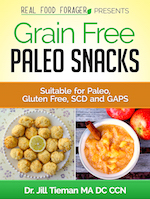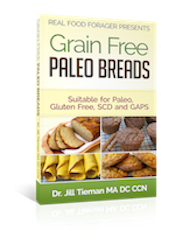Today the American Cancer Society issued new guidelines for use of routine screening mammography. The new revision states that annual screening should start at age 45, not 40 as previously held. So, if you followed their previous recommendations and got your annual screening at age 40, you received unnecessary radiation times five.
The new guidelines outline that women of average risk should start at age 45 and have one a year until age 55 and then have it every other year. They offer the option to have one annually as well.
Interestingly, the American Cancer Society does NOT recommend clinical breast examination for breast cancer screening among average risk women at any age. That means that doing your own home self examination for lumps in your breast is useless (according to them) and they prefer you to have ionizing radiation to sensitive breast tissue instead.
Harumph.
In contrast, the U.S. Preventive Services Task Force recommends that most women can safely wait until they are 50 to start getting mammograms, and then get one every other year.
Studies have found that women over the age of 55 tend to get less aggressive cancers.
The U.S. Preventive Services Task Force recommendations are used as the basis for government health insurance policies, but Congress passed legislation overriding the USPSTF guidelines.
To further complicate things, the American College of Obstetricians and Gynecologists (ACOG) advises that women start at age 40 and continue mammography screening every one to two years. They also recommend a clinical breast exam.
Mammography is the Standard of Care
According to American Cancer Society, Dr. Richard Wender,
The most important thing about our new guidelines is to validate that screening mammography is the most effective thing a woman can do to reduce her chances of dying of breast cancer.
The new recommendations have been published in the Journal of the American Medical Association. A team of experts studied all the research they could find on the risks and benefits of mammograms.
They found that regular mammograms in women aged 40 to 69 did reduce the number of breast cancer deaths.
But Is the Risk of Repeated Mammography Worth the Benefit?
However, other studies show the opposite. Recently a large 2014 Canadian study, published in the British Medical Journal questioned whether mammograms actually reduce the risk of dying from breast cancer and found 22% incidence of over-diagnosis. The researchers concluded,
Annual mammography in women aged 40-59 does not reduce mortality from breast cancer beyond that of physical examination or usual care when adjuvant therapy for breast cancer is freely available. Overall, 22% (106/484) of screen detected invasive breast cancers were over-diagnosed, representing one over-diagnosed breast cancer for every 424 women who received mammography screening in the trial.
Another study published in the New England Journal of Medicine in 2012, found that as many as a third of cancers detected through routine mammograms may not be life-threatening. The researchers concluded,
Despite substantial increases in the number of cases of early-stage breast cancer detected, screening mammography has only marginally reduced the rate at which women present with advanced cancer. Although it is not certain which women have been affected, the imbalance suggests that there is substantial over-diagnosis, accounting for nearly a third of all newly diagnosed breast cancers, and that screening is having, at best, only a small effect on the rate of death from breast cancer.
The study exposed the fact that there is a tremendous amount of over-diagnosis which leads to unnecessary treatment of benign conditions that would resolve on their own.
This study opened the door for more discussion on the guidelines and use of repeated amounts of ionizing radiation (which causes cancer) as a screening tool for cancer.
A study published in the New England Journal of Medicine, in 2010, examined the effectiveness of mammograms. They found that mammograms seem to have reduced cancer death rates by only 0.4 deaths per 1,000 women – a very small benefit.
Additionally, a systemic review of randomized trials of mammography screening (published by The Nordic Cochrane Centre 2012) found that for every 2000 women attending mammography screening throughout 10 years, 1 less dies of breast cancer. Concurrently, approximately 10 women with pseudo disease receive a diagnosis of breast cancer and are unnecessarily treated.(Source).
But how many cancers are formed by being exposed to radiation to the breast?
And how terrifying is it to have them find a suspicious spot on the x-ray?
Think of it.
You go for your routine screening mammography and they find something. They take a series of extra views (more radiation to sensitive breast tissue and more compression to the breast). They still see something suspicious.
This leads to a biopsy – an extraordinarily painful procedure — or other testing, simply to find out that nothing was wrong.
Yes, it is overwhelmingly relieving to receive that conclusion, but going through the testing is exceedingly stressful — not to mention the additional radiation to the breast, the cutting of tissue and the emotional strain as well as the little voice in the back of your head that worries about the next time the testing is done.
All of these things have a consequence on the health of an individual.
What Do the New Guidelines for Mammography REALLY Tell Us?
They tell us that the safety and benefit of repeated mammography is not clear. This means that for the last 30 years of mammography screening, many women have not received any benefit – in fact, some may have developed cancer from the radiation to breast tissue.
Of course, there are many cases where mammography HAS benefited women by catching a tumor in its early stages.
It is not my intention to discourage women from getting cancer screening. However the safety of mammography has to be questioned and its use as a yearly tool needs to be evaluated.
There are other, safer screening tools such as thermography which, hopefully, will become standard of care. The technology for thermography has improved, making it more reliable and predictive.
Finally, getting a yearly mammogram does nothing for true PREVENTION. True prevention has to do with a lifestyle that involves avoiding all the toxic exposures through food, water, air and civilization in general.
As always, this is not meant to replace a discussion with your personal physician. See the rest of my disclaimer here.
What are your thoughts on routine mammography? Leave a comment and let me know!
Related articles
There is still time to see the FREE series The Truth About Cancer.I am really enjoying these fascinating interviews about effective, non-toxic treatments for cancer!
Take the short cancer risk quiz here!











